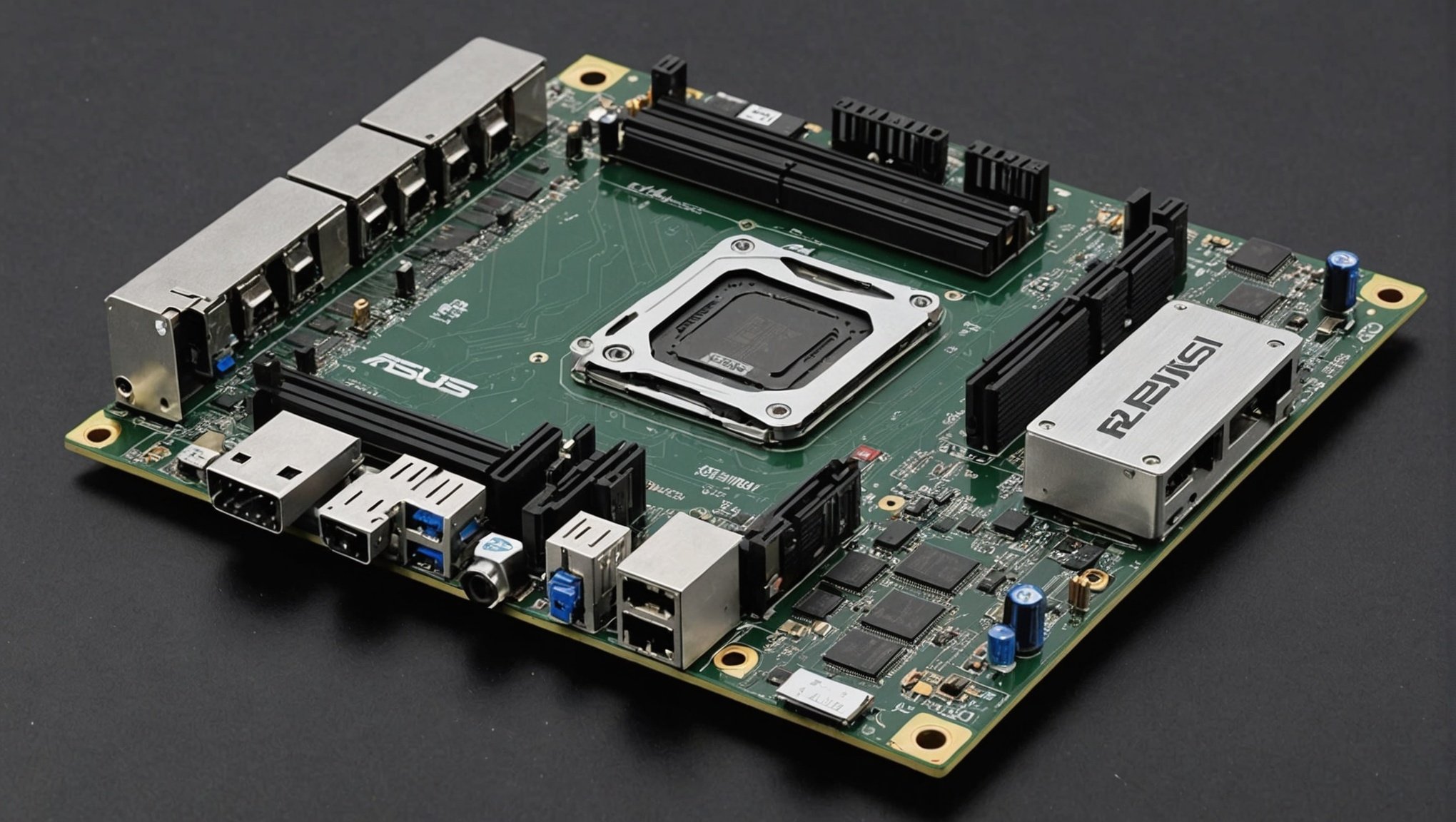The digital age requires faster and more efficient data transfer rates, and a 10GbE (10-gigabit Ethernet) network is a crucial upgrade for any organization looking to optimize its data infrastructure. The ASUS XG-C100C card is a popular choice for achieving this high-speed connectivity. This guide will provide a comprehensive overview of the steps involved in setting up such a network, ensuring you can effortlessly enhance your data transfer capabilities.
Understanding the Basics of 10GbE Networks
Before diving into the setup process, it is essential to understand what a 10GbE network entails and why it is beneficial. A 10GbE network offers data transfer rates of up to 10 gigabits per second (Gbps), significantly surpassing the capabilities of traditional gigabit Ethernet. This speed boost is especially useful for tasks that involve large data volumes, such as video editing, server operations, and data backups.
Also to discover : What are the steps to set up a dual-boot system with Windows 10 and Ubuntu on a Lenovo ThinkPad X1 Carbon?
The ASUS XG-C100C card is a network interface card (NIC) designed to enable 10GbE connectivity. It is compatible with various operating systems, including Windows and Linux, making it a versatile choice for diverse computing environments. The card employs a PCIe 3.0 x4 interface, ensuring efficient data transfer between the computer and the network.
Preparing for Installation
Before installing the ASUS XG-C100C card, certain preparatory steps are necessary to ensure a smooth and successful installation process. Proper preparation involves gathering the necessary hardware, software, and tools.
In parallel : What are the steps to install and configure a RAID 5 array on a Synology DS920+ for enhanced performance?
First, verify the compatibility of your computer’s motherboard with the ASUS XG-C100C card. The motherboard should have an available PCIe 3.0 x4 slot. It is also advisable to check the manufacturer’s website for any firmware updates that may be required for optimal performance.
Next, ensure you have the necessary tools for the installation. A screwdriver, anti-static wrist strap, and a clean workspace are essential to avoid damaging any components. Additionally, download the latest drivers for the ASUS XG-C100C card from the official ASUS website. Having these drivers on hand before installation will streamline the setup process.
Lastly, acquire the appropriate cabling for your network. Category 6a (Cat6a) or Category 7 (Cat7) Ethernet cables are recommended for 10GbE networks due to their ability to handle higher data rates. These cables should be of sufficient length to connect all devices within your network seamlessly.
Installing the ASUS XG-C100C Card
With all preparatory steps completed, you are now ready to install the ASUS XG-C100C card. Follow these steps to ensure a proper installation:
- Power Down and Unplug: Turn off your computer and disconnect it from the power source. This step is crucial to avoid any electrical damage during the installation process.
- Open the Case: Remove the side panel of your computer case to access the internal components. Refer to your computer’s manual if you are unsure how to do this.
- Attach the Anti-Static Wrist Strap: Wear the anti-static wrist strap and attach it to a grounded metal object to prevent static discharge that could damage sensitive components.
- Locate the PCIe Slot: Identify an available PCIe 3.0 x4 slot on your motherboard. Ensure there is enough space around the slot to accommodate the ASUS XG-C100C card.
- Insert the Card: Carefully insert the ASUS XG-C100C card into the PCIe slot, applying gentle pressure until it is fully seated. Secure the card in place using the screw provided.
- Reassemble and Power Up: Replace the side panel of your computer case, reconnect all cables, and power on your computer.
Upon powering up your computer, the operating system should detect the new hardware. Proceed to install the drivers you previously downloaded to ensure the card functions correctly.
Configuring Your Network for 10GbE
With the ASUS XG-C100C card successfully installed, the next step involves configuring your network for 10GbE connectivity. This includes setting up appropriate network infrastructure and configuring network settings.
Network Infrastructure
To fully utilize the 10GbE capabilities of the ASUS XG-C100C card, your network infrastructure must support 10GbE speeds. This involves upgrading your network switch to a 10GbE switch. A 10GbE switch will ensure that all connected devices can communicate at high-speed rates, eliminating potential bottlenecks.
When choosing a 10GbE switch, consider the number of ports needed and any additional features such as VLAN support, QoS (Quality of Service), and link aggregation. These features can enhance network performance and management.
Network Settings
Once your network infrastructure is in place, configure the network settings on your devices to enable 10GbE connectivity. This process may vary depending on the operating system you are using.
For Windows users:
- Open the Network and Sharing Center.
- Click on Change Adapter Settings.
- Right-click on the ASUS XG-C100C adapter and select Properties.
- Configure the Internet Protocol Version 4 (TCP/IPv4) settings, ensuring the IP address and subnet mask are correctly set.
- Verify that the Link Speed & Duplex settings are set to 10 Gbps Full Duplex.
For Linux users:
- Open the terminal.
- Use the
ifconfigcommand to identify the network interface associated with the ASUS XG-C100C card. - Edit the network configuration file to set the IP address, subnet mask, and other relevant settings.
- Use the
ethtoolcommand to verify and configure the link speed and duplex settings.
Testing and Optimizing Your 10GbE Network
After configuring your network, it is crucial to test and optimize the 10GbE connectivity to ensure maximum performance. Testing can help identify any potential issues and provide an opportunity for fine-tuning.
Testing Network Performance
To test the performance of your 10GbE network, you can use various network benchmarking tools such as iPerf, NetIO, or LAN Speed Test. These tools allow you to measure the actual data transfer rates between devices on your network.
- Install the Benchmarking Tool: Download and install the chosen tool on multiple devices within your network.
- Run the Test: Initiate the test by specifying the IP addresses of the devices involved. The test will measure the data transfer rates and provide a detailed report.
- Analyze the Results: Review the test results to identify any discrepancies or areas for improvement. Look for consistent transfer rates close to 10Gbps.
Optimizing Network Performance
Based on the test results, you may need to optimize various aspects of your network to achieve the best performance. Consider the following tips:
- Cable Quality: Ensure all Ethernet cables used are of high quality (Cat6a or Cat7). Poor-quality cables can degrade performance.
- Network Switch Configuration: Review the switch configuration to ensure it is optimized for 10GbE. Enable features such as flow control and jumbo frames if supported.
- Driver Updates: Regularly check for firmware and driver updates for the ASUS XG-C100C card and other network components.
- Network Traffic Management: Implement Quality of Service (QoS) policies to prioritize critical data traffic, reducing latency and improving overall performance.
Setting up a 10GbE network using an ASUS XG-C100C card is a valuable investment for organizations seeking high-speed data transfer capabilities. By following the steps outlined in this guide, from preparation and installation to configuration and optimization, you can ensure a seamless transition to 10GbE connectivity.
The primary advantage of upgrading to a 10GbE network is the significant increase in data transfer speeds, which can enhance productivity and efficiency in various applications. With the ASUS XG-C100C card, you have a reliable and versatile solution for achieving this upgrade.
In conclusion, with proper setup and optimization, a 10GbE network can provide your organization with the high-speed connectivity needed to meet the demands of today’s data-intensive tasks. Embrace the future of networking with the ASUS XG-C100C card and enjoy the benefits of blazing-fast data transfer rates.











